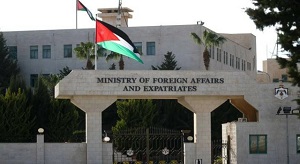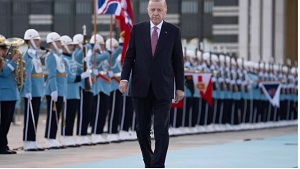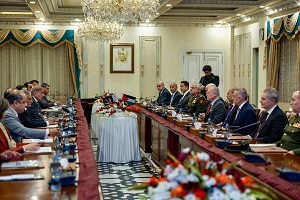The new kill zone: Gaza's borders after the 'ceasefire' - By Ramzy Baroud, The Jordan Times
The so-called Gaza ceasefire was not a genuine cessation of hostility, but a strategic, cynical shift in the Israeli genocide and ongoing campaign of destruction.
Starting on October 10, the first day of the announced ceasefire, Israel transitioned tactics: moving from indiscriminate aerial bombardment to the calculated, engineered demolishing of homes and vital infrastructure. Satellite images, corroborated by almost hourly media and ground reports, confirmed this methodical change.
As direct combat forces seemingly withdrew to the adjacent "Gaza envelope" region, a new vanguard of Israeli soldiers advanced into the area east of the so-called Yellow Line, to systematically dismantle whatever semblance of life, rootedness, and civilization remained standing following the Israeli genocide. Between October 10 and November 2, Israel demolished 1,500 buildings, utilizing its specialized military engineering units.
The ceasefire agreement divided Gaza into two halves: one west of the Yellow Line, where the survivors of the Israeli genocide were confined, and a larger one, east of the line, where the Israeli army maintained an active military presence and continued to operate with impunity.
If Israel truly harbored the intention of, indeed, evacuating the area following the agreed-upon second phase of the ceasefire, it would not be actively pursuing the systematic, structural destruction of this already devastated region. Clearly, Israel’s motives are far more insidious, centered on rendering the region perpetually uninhabitable.
Aside from leveling infrastructure, Israel is also carrying out a continuous campaign of airstrikes and naval attacks, relentlessly targeting Rafah and Khan Yunis in the south. Later, and with greater intensity, Israel also began carrying out attacks in areas that were, in theory, meant to be under the control of Gazans.
According to the Palestinian Ministry of Health in Gaza, 260 Palestinians have been killed and 632 wounded since the commencement of the so-called ceasefire.
In practice, this ceasefire amounts to a one-sided truce, where Israel can carry out a relentless, low-grade war on Gaza, while Palestinians are systematically denied the right to respond or defend themselves. Gaza is thus condemned to relive the same tragic cycle of violent history: a defenseless, impoverished region trapped under the boot of Israel's military calculations, which consistently operate outside the periphery of international law.
Before the existence of Israel atop the ruins of historic Palestine in 1948, the demarcation of Gaza's borders was not driven by military calculations. The Gaza region, one of the world's most ancient civilizations, was always seamlessly incorporated into a larger geographical socio-economic space.
Before the British named it the Gaza District (1920-1948), the Ottomans considered it a sub-district (Kaza) within the larger Mutasarrifate of Jerusalem – the Jerusalem Independent District.
But even the British designation of Gaza did not isolate it from the rest of the Palestinian geography, as the borders of the new district reached Al-Majdal (today's Ashkelon) in the north, Bir al-Saba’ (Beersheba) in the east, and the Rafah line at the Egyptian border.
Following the 1949 Armistice Agreements, which codified the post-Nakba lines, the collective torment of Gaza, as illustrated in its shrinking boundaries, began in earnest. The expansive Gaza District was brutally reduced to the Gaza Strip, a mere 1.3 percent of the overall size of historic Palestine. Its population, due to the Nakba, had explosively grown with over 200,000 desperate refugees who, along with several generations of their descendants, have been trapped and confined in this tiny strip of land for over 77 years.
When Israel permanently occupied Gaza in June 1967, the lines separating it from the rest of the Palestinian and Arab geography became an integral, permanent part of Gaza itself. Soon after its occupation of the Strip, Israel began restricting the movement of Palestinians further, sectionalizing Gaza into several regions. The size and location of these internal lines were largely determined by two paramount motives: to fragment Palestinian society to ensure its subjugation, and to create military 'buffer zones' around Israeli military encampments and illegal settlements.
Between 1967 and Israel's so-called 'disengagement' from Gaza, Israel had built 21 illegal settlements and numerous military corridors and checkpoints, effectively bisecting the Strip and confiscating nearly 40 percent of its land mass.
Following the redeployment, Israel retained absolute, unilateral control over Gaza’s borders, sea access, airspace, and even the population registry. Additionally, Israel created another internal border within Gaza, a heavily fortified "buffer zone" snaking across the northern and eastern borders. This new area has witnessed the cold-blooded killing of hundreds of unarmed protesters and the wounding of thousands who dared to approach what was often referred to as the "kill zone."
Even the Gaza sea was effectively outlawed. Fishermen were inhumanely confined to tiny spaces, at times less than three nautical miles, while simultaneously surrounded by the Israeli navy, which routinely shot fishermen, sank boats, and detained crews at will.
Gaza's new Yellow Line is but the latest, most egregious military demarcation in a long, cruel history of lines intended to make the lives of the Palestinians impossible. The current line, however, is worse than any before it, as it completely suffocates the displaced population in a fully destroyed area, without functioning hospitals and with only trickles of life-saving aid.
For Palestinians, who have been battling confinements and fragmentation for generations, this new arrangement is the intolerable and inevitable culmination of their protracted, multi-generational dispossession.
If Israel believes it can impose the new demarcation of Gaza as a new status quo, the next few months will prove this conviction devastatingly wrong. Tel Aviv has simply recreated a much worse, inherently unstable version of the violent reality that existed before October 7 and the genocide. Even those not fully familiar with the deep, painful history of Gaza must realize that sustaining the Yellow Line of Gaza is nothing more than a dangerous, bloody illusion.
Ramzy Baroud is a journalist, author and the Editor of The Palestine Chronicle. He is the author of six books. His forthcoming book, ‘Before the Flood,’ will be published by Seven Stories Press. His other books include ‘Our Vision for Liberation’, ‘My Father was a Freedom Fighter’ and ‘The Last Earth’. Baroud is a Non-resident Senior Research Fellow at the Center for Islam and Global Affairs (CIGA)
Latest News
-
 Jordan condemns Israeli minister’s calls to target Palestinian leadership
Jordan condemns Israeli minister’s calls to target Palestinian leadership
-
 Turkey seeks to host next COP as co-presidency plans falter
Turkey seeks to host next COP as co-presidency plans falter
-
 ‘Israel’ open to US F-35 sale to Saudi if it brings normalization: Axios
‘Israel’ open to US F-35 sale to Saudi if it brings normalization: Axios
-
 "Israeli tank fires near our forces in Lebanon," UNIFIL
"Israeli tank fires near our forces in Lebanon," UNIFIL
-
 King meets with Pakistan PM in Islamabad, emphasises importance of expanding cooperation
King meets with Pakistan PM in Islamabad, emphasises importance of expanding cooperation